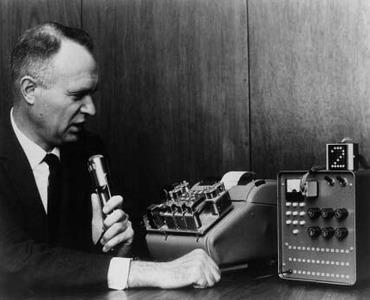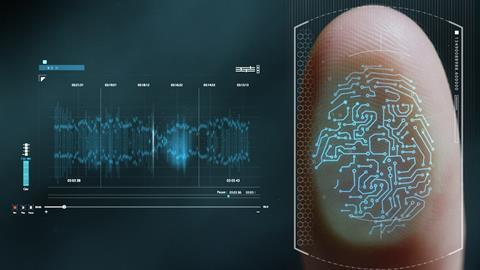Broadcasters are examining voiceprint technology as a way of accessing and exploring their digital services, but habit may be the biggest barrier to adoption, writes Amelia Kallman.
Have you ever gone to sign into an account and ended up typing every password you’ve ever used only to give up and make a new one that you’re just going to forget again next time?
Wouldn’t it be great if you could simply say your name and forget about passwords and pins altogether? Soon this fantasy may be reality.

While speech recognition technology traces back to the debut of IBM’s Shoebox at the 1962 World’s Fair, recognising sixteen words and numbers zero to nine, it’s only been in the last few years that it has entered the mainstream with voice assistants such as Siri, Cortana, and Alexa.
People are able to speak one-hundred-fifty words per minute, versus typing only forty words per minute, and research predicts that within three years 50% of all searches will be done by voice.
But now, with recent innovations from companies like Microsoft and Fujitsu, the voice might also hold the key to increased security, personalisation and better customer experiences. Just this week Microsoft released a report that they have been able to reduce the failure rate of speech recognition by machine from the previous record of 5.9%, which was equal to that of humans, down to 5.1%, exceeding human talents.
Though a remarkable achievement, they recognise there are still significant challenges to address. These include achieving the same levels of recognition to humans in noisy environments, dealing with bad phone or internet connections, recognising filler phrases such as ‘uh’, ‘um’ and ‘er’, deciphering intent, and overcoming accents and dialects.
One area where there has been increasing improvement is in biometric identification using voice identification. Biometrics uses physical characteristics, such as fingerprints, iris and face recognition, and ‘voiceprints’ to authenticate and identify interactions against pre-stored biometric data.
Last week, the BBC revealed it is experimenting with voiceprint technology to access and explore their digital services, such as the iPlayer.
The proof of concept allows a user to sign in and navigate the system with speech stating your name and a short phrase.
Artificial intelligence (AI) matches your unique vocal characteristics, such as pitch, tone, and patterns, to a biometric template stored in the cloud, granting you access to your personal account and training the machine to remember your personal preferences.
In addition, the prototype lets you use your voice as a remote control, and ask questions like, ‘What’s going on in the world?’ or ‘Are there any new comedy specials I haven’t seen?’ to which the system responds with an action.
With more than a third of people regularly forgetting and asking for new passwords, the BBC isn’t the only company exploring less frustrating alternatives.
A recent survey conducted by SecureAuth found that 66% of cyber security professionals have been tasked with replacing the password routine.
Google’s Project Abacus is testing a password-free login system for Android phones that aims to eliminate passwords and pins for users by the end of this year. It is based on a “test score” that uses personal data like voice, speech, patterns, location, and biometrics gathered through embedded sensors to calculate a continuous score. If a score is disrupted by inconsistencies, additional security measures will be activated.

But how unique are our voices really? The accuracy of biometric identification can be measured by the ‘False Acceptance rate’, or the likelihood that a security system will incorrectly accept an access attempt by an unauthorised user.
In Beijing, Fujitsu Research and Development Centre have developed high-precision voiceprint authentication technology where the error rate of identity is about 2.2% based on only three seconds of speech. With the average personal verification questions used by customer service professionals taking longer than sixty seconds, this technology could increase efficiency and security, while building more trusted and sustainable customer relationship.
The technology is quickly advancing, but behaviour and habit may prove the biggest barriers to widespread adoption. Whilst 90% of people have tried voice commands and activations, only 6% have done it in public, indicating that the speed, efficiency, and effectiveness of this technology has not yet outweighed the perceived potential for failure and embarrassment. Companies must be able to prove the value of voice technology to their customers, and replacing the need to remember and recall passwords may just be the best place to start.
Amelia Kallman is a futurist, speaker, journalist, author, nightclub owner and director of the first virtual reality burlesque show.






















No comments yet